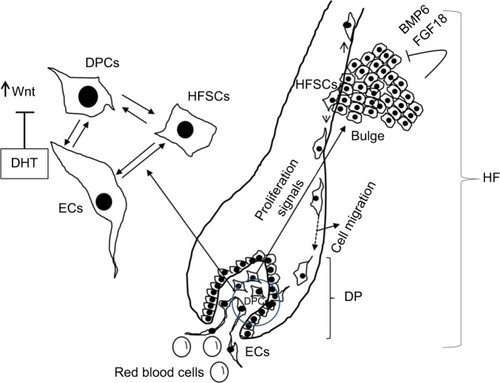Figures & data
Figure 1 Diagram of the HF and factors involved in hair regeneration.
Abbreviations: BMP6, bone morphogenetic protein 6; DHT, dihydrotestosterone; DP, dermal papilla; DPCs, dermal papilla cells; ECs, endothelial cells; FGF18, fibroblast growth factor 18; HF, hair follicle; HFSCs, hair follicle stem cells.

Table 1 Prescribed products used for AGA
Table 2 Non-prescription products used for AGA and their proposed mechanisms of action
Table 3 Stem cell factors and small molecules that promote hair growth and their mechanisms of action
